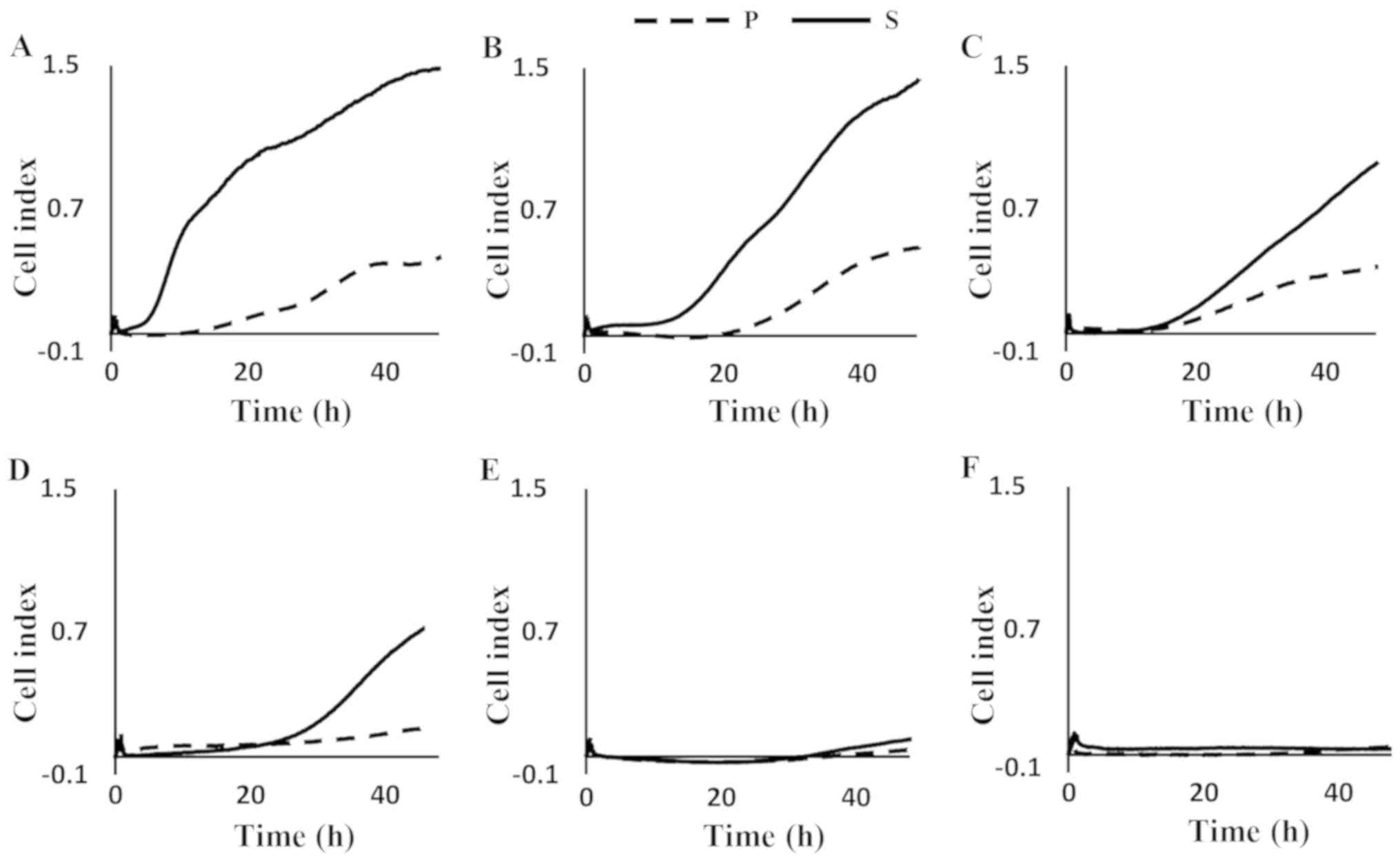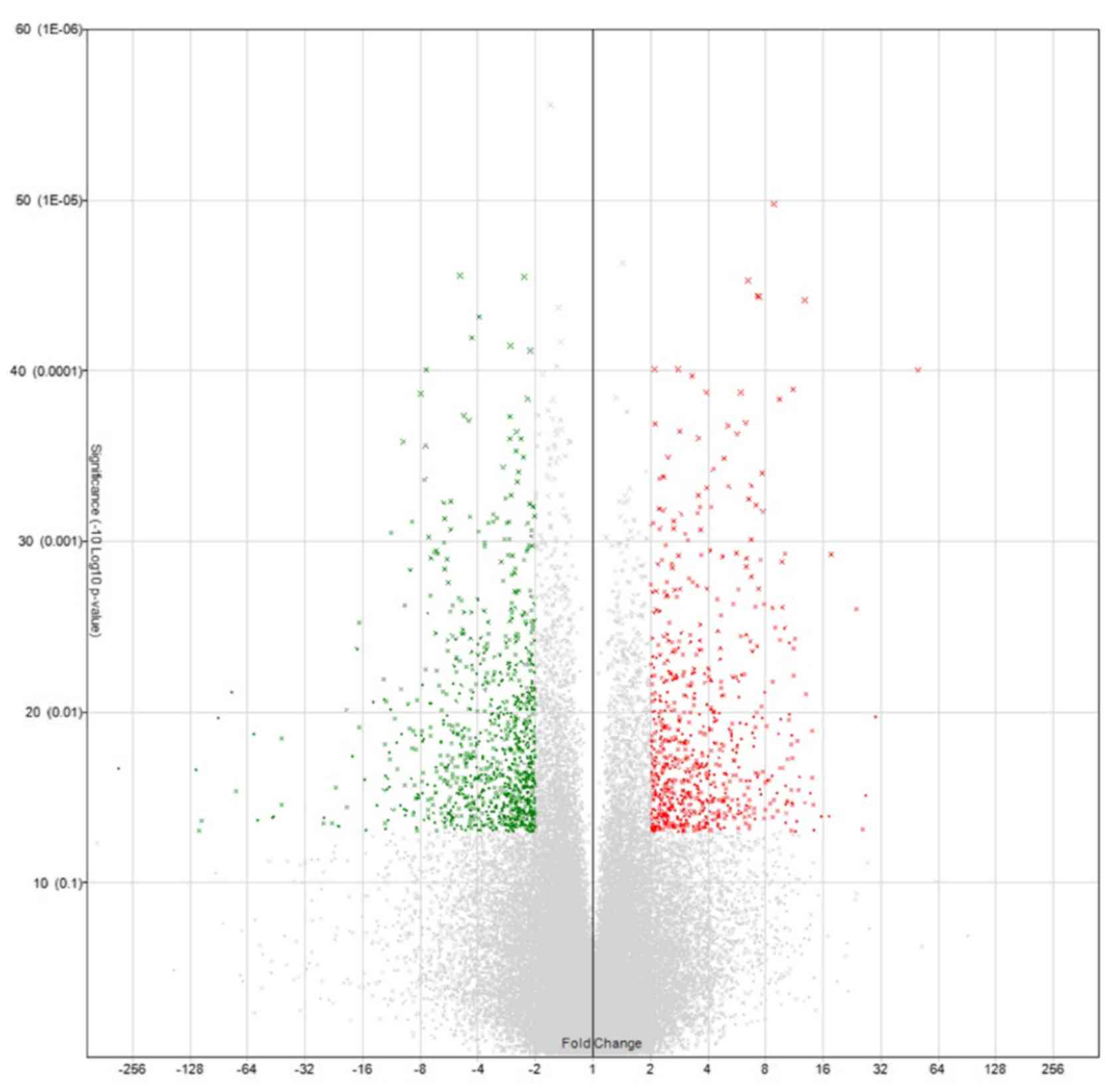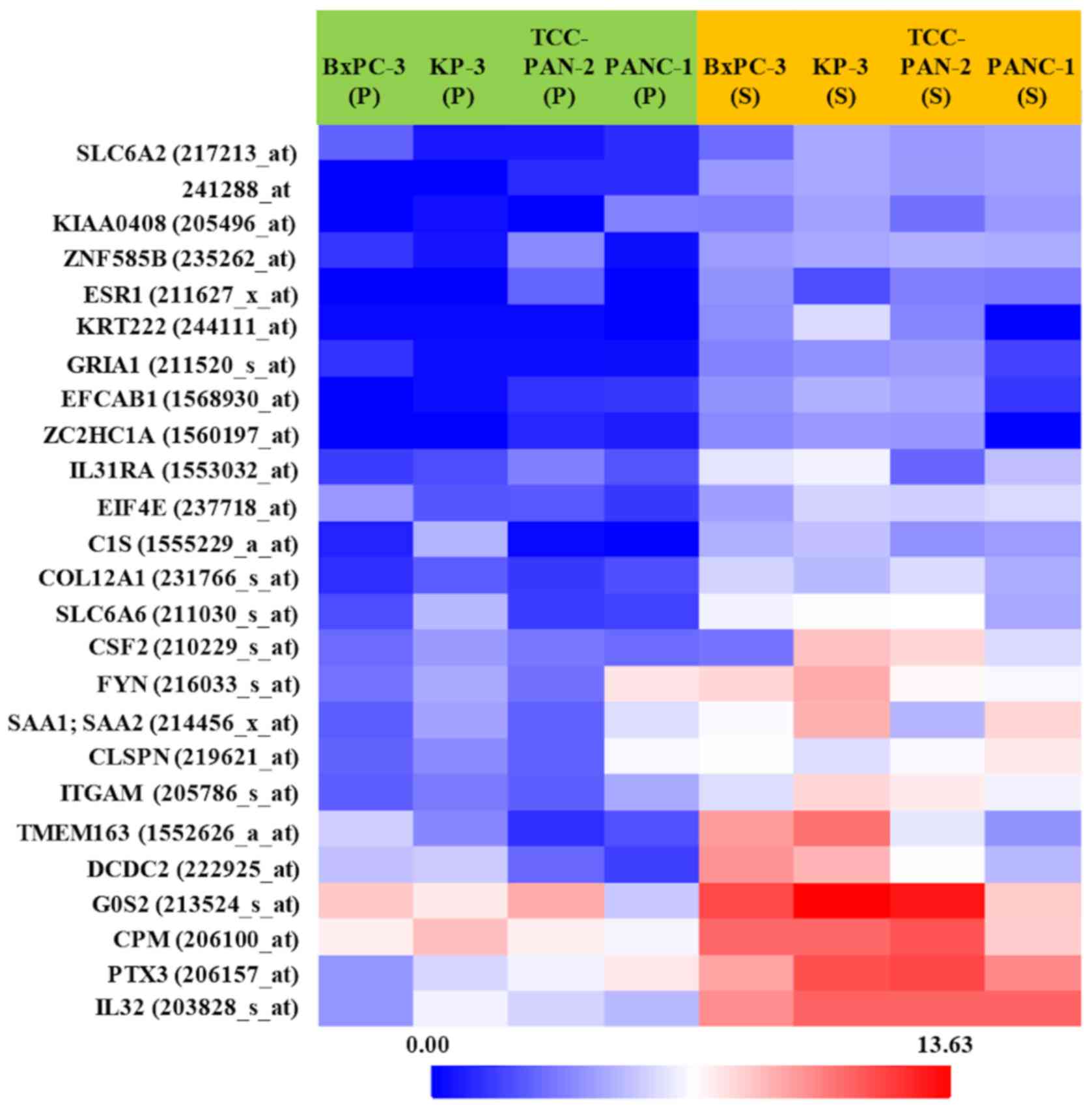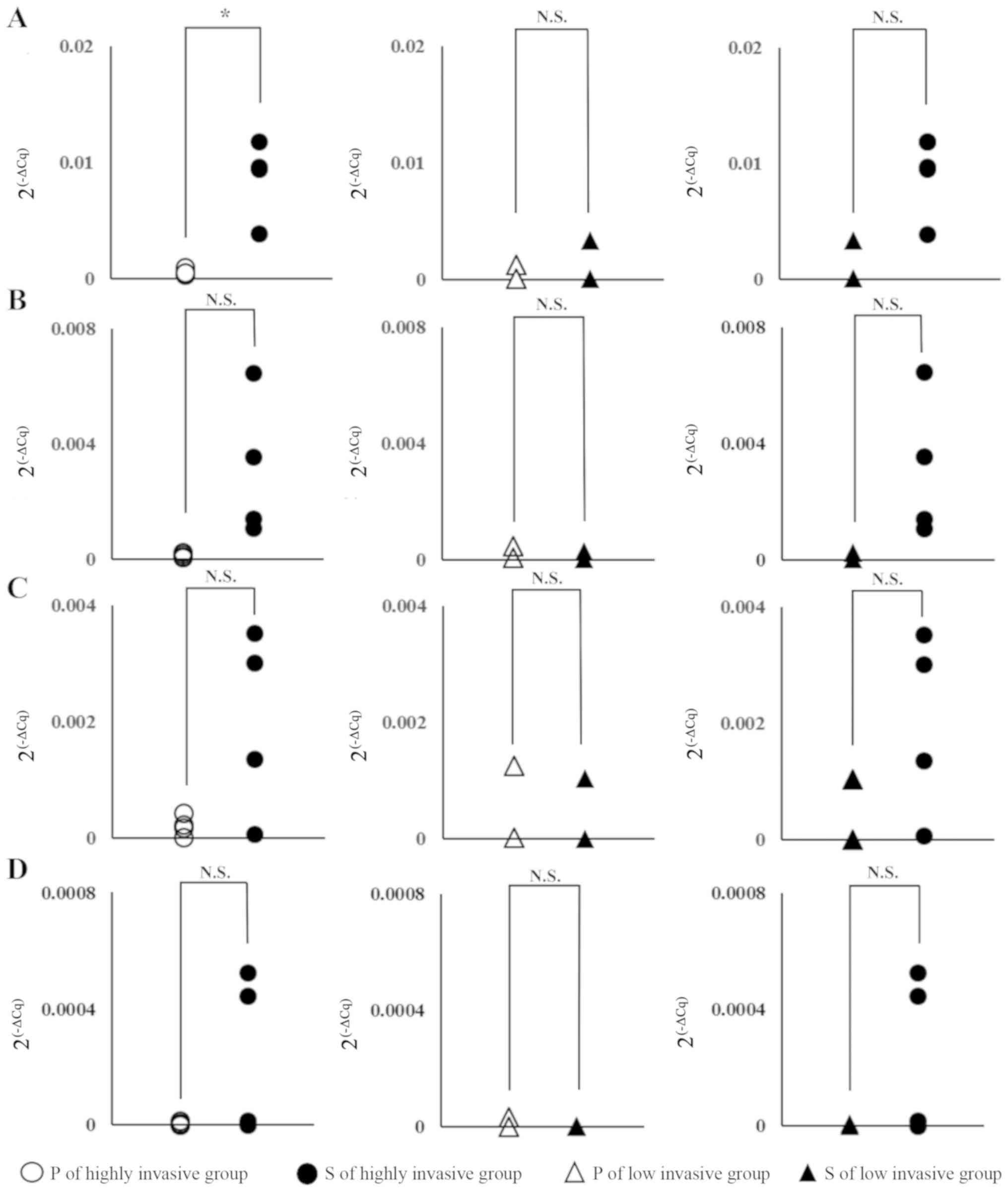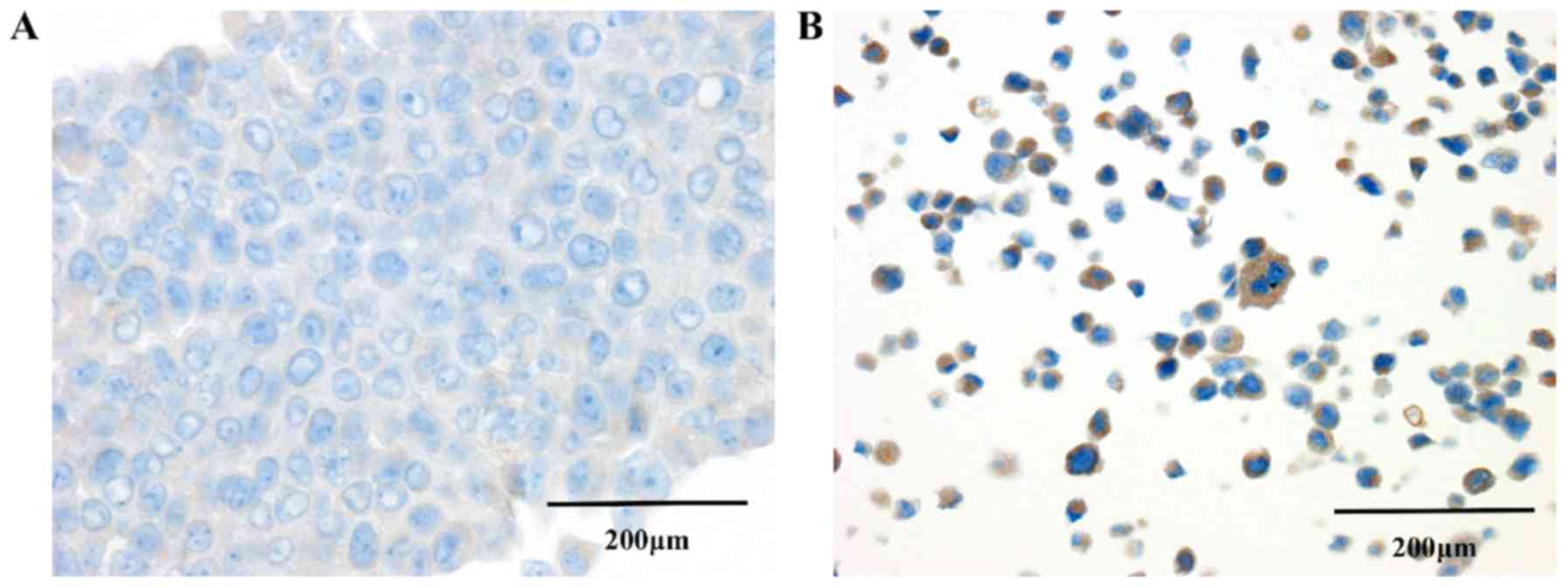Establishment of highly invasive pancreatic cancer cell lines and the expression of IL‑32
- Authors:
- Published online on: July 8, 2020 https://doi.org/10.3892/ol.2020.11825
- Pages: 2888-2896
-
Copyright: © Takagi et al. This is an open access article distributed under the terms of Creative Commons Attribution License.
Metrics: Total
Views: 0 (Spandidos Publications: | PMC Statistics: )
Total PDF Downloads: 0 (Spandidos Publications: | PMC Statistics: )
Abstract
Compared to tumors of other organs, pancreatic cancer is highly aggressive; with one of its biological features being that, despite a prominent fibrotic stroma, there is remarkable infiltration of tumor cells. This characteristic is considered to be the main reason for the poor prognosis of patients with pancreatic cancer. Therefore, in order to elucidate the factors that contribute to this high invasiveness, a selective invasion method was used to establish four highly invasive subclones from six human pancreatic cancer cell lines. The results demonstrated that two cell lines did not exhibit enhanced invasiveness. Microarray analysis revealed that, in the highly invasive cell lines, several genes were expressed at high levels, compared with the original cell lines. These highly expressed genes were recognized only in highly invasive cells. Among them, IL‑32 was most strongly upregulated in the highly invasive cells, compared with cells with a low invasive potential, as well as the original cells. RT‑qPCR and western blot analysis confirmed the high levels of expression of IL‑32 in highly invasive cells at the RNA and protein levels. In addition, immunohistochemical analysis of resected surgical materials revealed that the tumor cells expressed IL‑32 and, in particular, many IL‑32 positive cells were seen at the invasive front of the tumor tissue. IL‑32 is a cytokine that is widely involved in the development of cancer and has recently received considerable attention. This cytokine has multiple splice variants and shows a wide variety of behaviors, depending on the tumor type and primary organ. Although some hypotheses have been proposed to explain the activity of IL‑32, a unified view has not been agreed. In the present study, through the establishment of highly invasive cells from pancreatic cancer and a comprehensive gene analysis, it is suggested that IL‑32 may serve an important role as a molecule involved in the invasiveness of this neoplasm.



